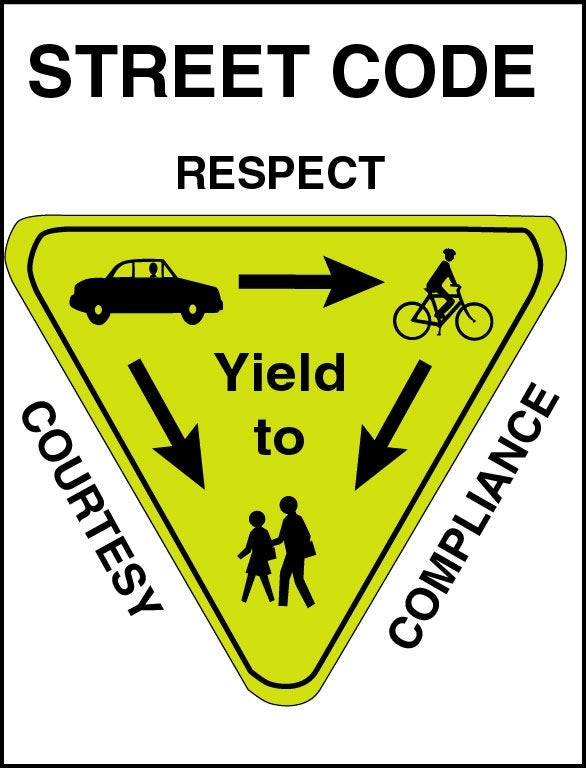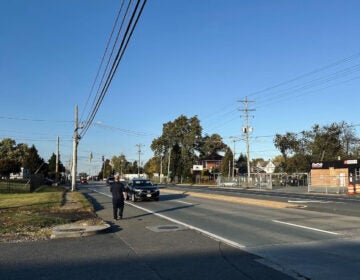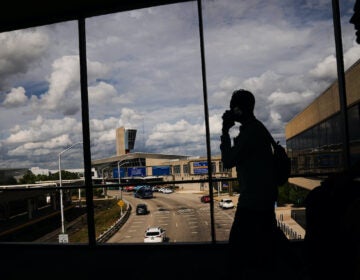Philadelphia Pedestrian and Bicycle Plan

April 13
By Steven B. Ujifusa
For PlanPhilly
Philadelphia is one of a few large American cities where a significant segment of the population can live without a car. It’s a lifestyle that stretches across socio-economic boundaries and for some, it’s a matter of preference. Many younger residents of Center City bike to work. For others, that type of commute is a matter of necessity. Working class residents of North and South Philadelphia do the same to avoid paying for gas and sky-high car insurance.
According to a 2006 U.C. Berkeley study, the Philadelphia metro area has one of the lowest car ownership rates in the country, with 13 percent of its households not having access to a car. This places it in between New Orleans (14 percent) and Newark, New Jersey (12 percent). New York City, as would be expected, has the lowest rate, with 42 percent of its households doing without a car. The study also shows significant racial gaps. Nationwide, 19 percent of African-American households lack a car, as compared with 4.6 percent of white households and 13.7 percent of Latino households.
According to the project directors, Philadelphia’s new Bicycle and Pedestrian Plan has two goals for the city’s pedestrians and bicyclists: greater overall connectivity and closing existing gaps in the system. The project is being funded by a grant from the Delaware Valley Regional Planning Commission. Since there was not enough money to cover the entire city, the Commission decided to use the funds to focus on the portions of the city where the bicycle lane system is the least complete: Center City, North, and Northwest Philadelphia.
“It’s time to update the plan,” says Deborah Schaaf, project manager of the Commission’s new Philadelphia Pedestrian and Bicycle Plan, in an April 8 interview. “We’ve done the easier streets for bicycles, and it is also time to work on a pedestrian plan.”
In order to hear the opinions of people from all walks of life, the Philadelphia City Planning Commission will hold its first community meeting April 16th for its new Bicycle and Pedestrian Plan at 6:30 p.m. at the Fels Center Auditorium at 2407 South Broad Street. The second meeting will be held on the 16th floor of the Municipal Services Building at the same time on April 21. Community meetings for Northwest Philadelphia will be scheduled in May, with exact dates to be determined. As part of an effort to ensure greater community participation in city planning projects, the site includes a questionnaire that allows ordinary residents to share their ideas.
The project is a continuation of a bicycle plan completed in the 1990s, but never formally adopted by the city. The effort resulted in about 200 miles of bicycle lanes, more than exists in most cities in the United States. Despite these improvements, bicyclists find themselves competing with cars ands buses on crowded arterial thoroughfares such as Walnut and Broad Streets. Last year, intensive lobbying by the South Street Bridge Coalition (spearheaded by Campbell Thomas) ensured that the structure’s replacement would have greater safeguards for non-automobile users.
Unlike Center City or South Philadelphia, much of the post-1950 Philadelphia landscape is suburban in character, lacking sidewalks and bisected by freeways and wide boulevards. Upper Roxborough, adjacent to more compact Chestnut Hill and Germantown, is an example of the kind of neighborhood that will pose special challenges to the project team.
Charles Carmalt is the brand new Pedestrian & Bicycle Coordinator for the city and serves with Schaaf on the project’s steering committee. “The real goal of this process,” he said in an April 8 interview, “is to get an updated bicycle network plan and formalize it so we could pull it off the shelf and use it as a reference. We haven’t had a pedestrian plan in years, if ever. The two of them are separate plans but there may be common elements between them.”
Carmalt also wants to correct connectivity issues between bicyclists, pedestrians and mass transit stops. “In our plan,” he said, “we will need to make these connections safer, as accidents between pedestrians and cars are very likely to happen near bus stops. This will involve understanding barriers to safe pedestrian circulation, as well as existing conflicts between different travel modes.”
The city maintains a 15-year-old database that maps where bicyclists and pedestrians have been hit by cars and buses. “There are very few places where there are clusters of crashes,” Carmalt points out. “An example would be intersections along Market Street, were lots of pedestrians cross a very wide street with lots of traffic.”
The ultimate goal, according to the project website, is to “identify and help to prioritize strategies to increase the number and frequency of people walking and bicycling in the City by improving the connectivity, safety, convenience, and attractiveness of the pedestrian and bicycle networks.”
The Commission is proud of the project team they have assembled. Schaaf describes its main consultant, Toole Design of Hyattsville, Maryland, as a “top notch” design firm. The Philadelphia-based design firm of Campbell Thomas is one of the subcontractors. Carmalt commented that, “Bob Campbell of Campbell Thomas was on the previous master planning team, and he knows a lot about Philadelphia and how people use the streets.”
The project is advised by a steering committee that includes John Boyle of the Bicycle Coalition of Greater Philadelphia, Darren Fava of the Fairmount Park Commission, David Perri of the Streets Department, Greg Krykewycz of the Delaware Valley Regional Planning Commission, and Marisa Waxman of the Design Advocacy Group.
When asked what he hoped to see out of the plan, John Boyle of the Bicycle Coalition of Greater Philadelphia stated, “We would like to see the gaps in the bike lane network completed. We also want to make sure that the rights of bicyclers and pedestrians are accommodated in all future planning projects.”
As for specifics, Boyle hopes that the city will adopt a system that allows someone to call 311 to request that the city install a bike rack at a specific location. He also suggested the creation of separated bicycle lanes similar to those on 9th Avenue in New York. Boyle hopes that they could be placed on excessively wide streets with heavy bicycle traffic.
Project website and community questionnaire available at: www.tooledesign.com/philadelphia/index.php.
Contact the reporter at steven.ujifusa@gmail.com
WHYY is your source for fact-based, in-depth journalism and information. As a nonprofit organization, we rely on financial support from readers like you. Please give today.






